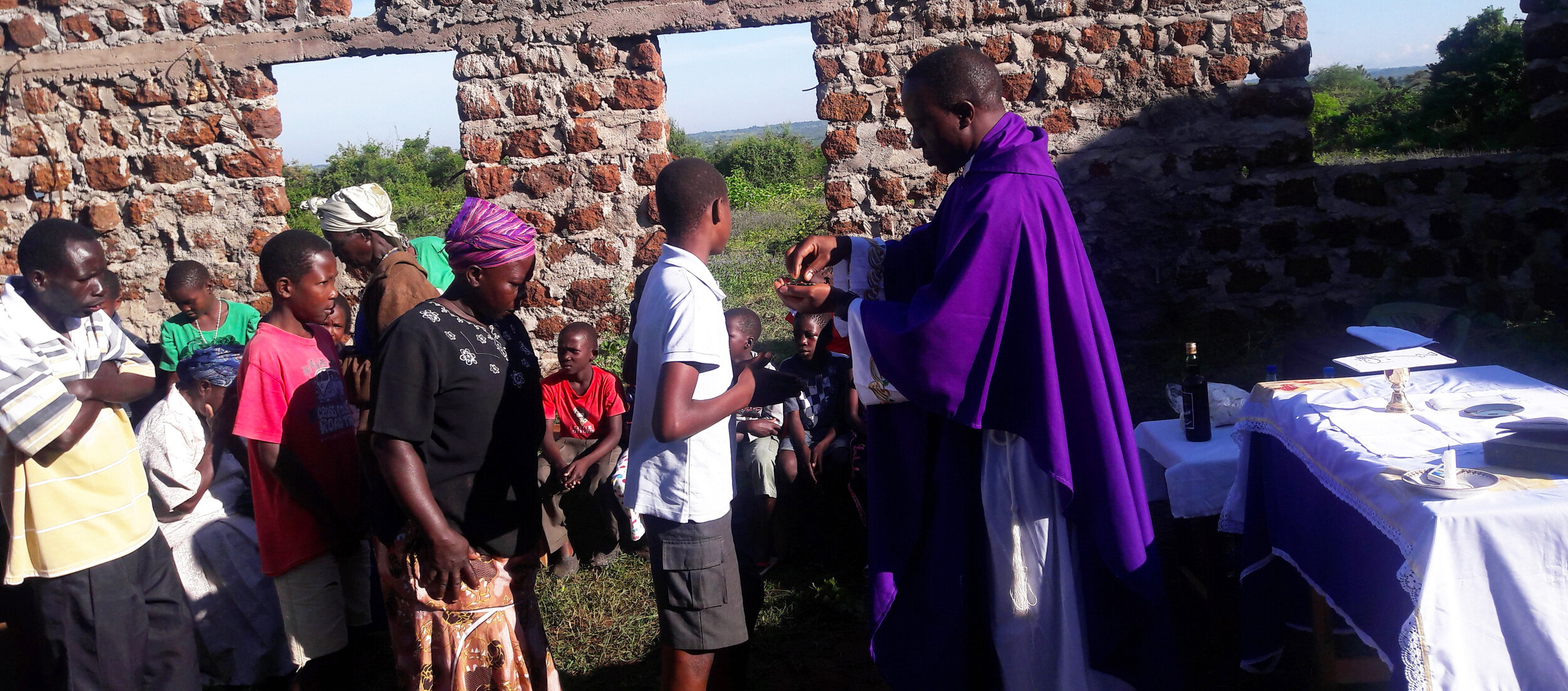A BRIEF INTRODUCTION
Fr. Thomas Ochieng Otanga, OCD
The story of the Carmelites begins with the hermits and penitents who wanted to imitate the Prophet Elijah by living a hermit-like life in the grottoes and caves of the mountain and settled their community near the spring of Elijah on Mount Carmel. Their life as an institute in the Church began officially with the Rule of life that they were given by St. Albert of Jerusalem between 1204 and 1214. As time went by, there were reforms that were aimed at purifying the institute. The most elaborate of these reforms was one initiated by St Teresa of Avila, which gave birth to the Order of Discalced Carmelite Friars.

The Discalced Carmelite friars were among the early explorers of what is now the western United States. The earliest Carmelite presence can be traced with the friars who came from Bavaria to Wisconsin in 1906 to live at Holy Hill, National Shrine of Mary Help of Christians. (In 2006 Holy Hill was honored with the distinct privilege of Basilica status as part of its centenary celebrations.) In 1914 St. Florian in West Milwaukee was added to their responsibilities. In 1942 they went to Brookline, Massachusetts to open a novitiate. (Brookline monastery was transferred to Brighton in 1989.) In 1947, the monasteries in Wisconsin and Massachusetts were joined to a 1916 Spanish foundation in Washington, DC to become the first Discalced Carmelite Province in the United States: The Province of the Immaculate Heart of Mary, the Washington Province. Now the members live and work in all the continents of the world. In the United States, since 1906, they can be found in Wisconsin, Washington DC, and Massachusetts.
In the United States, there are three Carmelite provinces or administrative units under the jurisdiction of three provincial superiors. These are the Washington Province (consisting of the Midwest and the eastern part of the United States), California/Arizona Province (mainly the west coast) and Oklahoma Province (covering the areas of Oklahoma and Texas). The Washington Province has missions in the Philippines (since 1947) and in Kenya (since 1995). This site focuses of the Washington Province’s mission in Kenya.
Kenya is a strikingly gorgeous country, a land of topographical and climatic variety. It is located on the east coast of Africa, situated astride the equator, and transected from north to south by the Great Rift Valley that runs all the way from northern Syria to Southern Mozambique. On the Kenyan borders to the north are Ethiopia and Sudan, to the east it is bordered by the Indian Ocean and Somalia, to the south by Tanzania, and the west by Uganda and Lake Victoria. The Church in this country as in many other African countries is vibrant and promising. Kenya has great potential with one of the world's fastest growing populations. In recent years, ethnic rivalries and drought conditions have resulted in increased political tension and have slowed the economic progress of this otherwise great country.
Consequently, the Kenyan people grapple particularly with issues of material poverty, diseases, and illiteracy. The Church plays a crucial role in the development of the people. The Washington Province trains Africans to become Carmelites so that they become instruments of God’s love and care for the sick, the hungry, poor and the powerless. Since 1995, there are 15 Carmelite ordained priests, and several students in formation.
In Kenya’s diversity of cultural context, the Washington Province sends Carmelite priests and brothers who become missionaries in Kenya. These missionaries empower African young men to become involved with parish ministries, giving spiritual services, teaching, and publications. The missionaries’ model reflects Jesus’ approach: he intimately related with his disciples in spiritual formation and kingdom proclamation (Mark 3:14).
Local resources are available and are utilized; however, there is always a need for more involvement. With the help of benefactors and friends, the Washington Province will continue their initiatives in Kenya to establish the church planting approach of the apostle Paul, who did not position himself as a local preacher. St. Paul did not initiate one church and become its pastor, in order to send others to plant new churches. Rather, he served as a mentor to people like Timothy and Titus, who initiated and nurtured new Churches.
To the well-wishers, friends, and benefactors of Kenya Region and of the Carmelites, we are deeply grateful for the support and encouragements you give us for the cause of the missions.
May the Good Lord bless you always.


